802.11r WiFi roaming configuration example: Difference between revisions
No edit summary |
No edit summary |
||
| Line 43: | Line 43: | ||
Navigate to the '''Fast Transition''' section | Navigate to the '''Fast Transition''' section | ||
<ol> | <ol> | ||
<li>Enter '''Mobile Domain''': 4f57 (mobility domain is a cluster of APs forming a continuous radio frequency space, where thePairwise Master | <li>Enter '''Mobile Domain''': 4f57 (mobility domain is a cluster of APs forming a continuous radio frequency space, where thePairwise Master | ||
Key (PMK) can be synchronized)</li> | Key (PMK) can be synchronized)</li> | ||
</ol> | </ol> | ||
*Note: 802.11v and 802.11k can be enabled in '''Network → Wireless → SSIDs → Edit SSID → Additional setting''', which can improve performance of Fast transit. Please see the reference: [https://wiki.teltonika-networks.com/view/802.11k/v_wireless_roaming_configuration_guide'''802.11k/v wireless roaming configuration guide'''] | *Note: 802.11v and 802.11k can be enabled in '''Network → Wireless → SSIDs → Edit SSID → Additional setting''', which can improve performance of Fast transit. Please see the reference: [https://wiki.teltonika-networks.com/view/802.11k/v_wireless_roaming_configuration_guide'''802.11k/v wireless roaming configuration guide'''] | ||
[[File:Networking rutx50 webui wireless ssid 802.11r FT configuration | [[File:Networking rutx50 webui wireless ssid 802.11r FT configuration v2.png|800px|center|border|class=tlt-border]] | ||
To reduce the posbility of interference between 2 AP/WiFi Router, Highly recommend that set radio channel manually. | To reduce the posbility of interference between 2 AP/WiFi Router, Highly recommend that set radio channel manually. | ||
| Line 91: | Line 90: | ||
Navigate to the '''Fast Transition''' section | Navigate to the '''Fast Transition''' section | ||
<ol> | <ol> | ||
<li>Enter '''Mobile Domain''': 4f57 (Keep same as gateway router's setting)</li> | <li>Enter '''Mobile Domain''': 4f57 (Keep same as gateway router's setting)</li> | ||
</ol> | </ol> | ||
[[File:Networking rutx11 webui wireless ssid 802.11r FT configuration | [[File:Networking rutx11 webui wireless ssid 802.11r FT configuration v2.png|800px|center|border|class=tlt-border]] | ||
==Result== | ==Result== | ||
Revision as of 02:46, 30 September 2024
Introduction
This article provides a basic configuration example of 802.11r WiFi roaming, which is suitable for setting up roaming WiFi network for small house or office.
Firmwware
The information in this page is updated in accordance with 00.07.09 firmware version. .
Prerequisites
- Main gateway with WAN access (Any RUTOS router. RUTX50 is used in this example)
- Access Points (Any WiFi-capable RUTOS device. RUTX11 (Router 1) and RUTX11 (Router 2) are used in this example)
Before you start configuring the router turn on "Advanced WebUI" mode. You can do that by clicking the "Basic" button under "Mode", which is located at the top-right corner of the WebUI.
Configuration
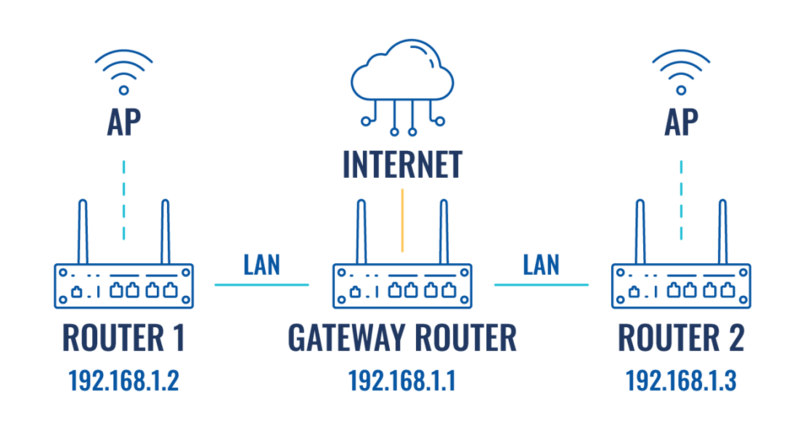
Gateway router
LAN Setting
Login to the router's WebUI, navigate to the Network → Interfaces → Edit LAN page. Enter main gateway's IP address and save. We will leave it default (192.168.1.1) for this example. Enter IP address on the same subnet as main gateway. We will use 192.168.1.2 for Router 1 and 192.168.1.3 for Router 2 in this example.
- Connect your AP/WiFi router to the gateway router using LAN to LAN connection.
- Login to the router's WebUI, navigate to the Network → Interfaces → Edit LAN page. Configure as follows:
- Enter IPv4 address. We will use our gateway router's IP - 192.168.1.1.

Enable 802.11r Fast Transition
Navigate to the Network → Wireless → SSIDs page. Configures as follows:
- Select radios to 2.4Ghz
- Enter SSID: WiFi_Roaming
- Enter Password
- Enable 802.11r Fast Transition
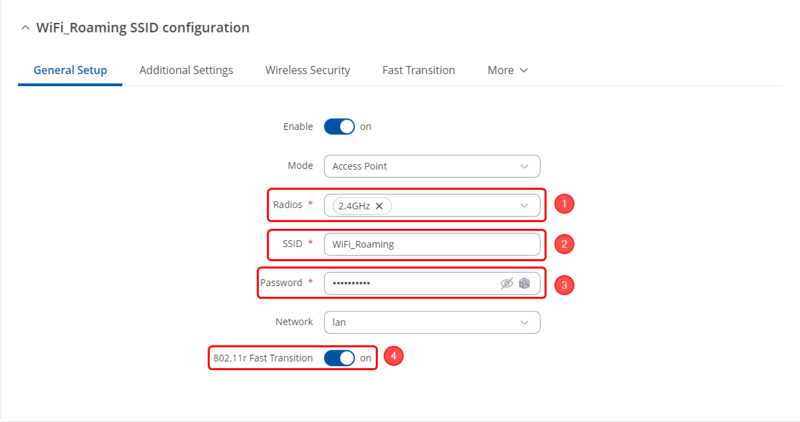
Navigate to the Fast Transition section
- Enter Mobile Domain: 4f57 (mobility domain is a cluster of APs forming a continuous radio frequency space, where thePairwise Master Key (PMK) can be synchronized)
- Note: 802.11v and 802.11k can be enabled in Network → Wireless → SSIDs → Edit SSID → Additional setting, which can improve performance of Fast transit. Please see the reference: 802.11k/v wireless roaming configuration guide
To reduce the posbility of interference between 2 AP/WiFi Router, Highly recommend that set radio channel manually.
- The reference How to manually set a Wi-Fi channel?
Navigate to the Network → Wireless → Radio → Edit 2.4GHz. Configures as follows:
- Select Channel: 11
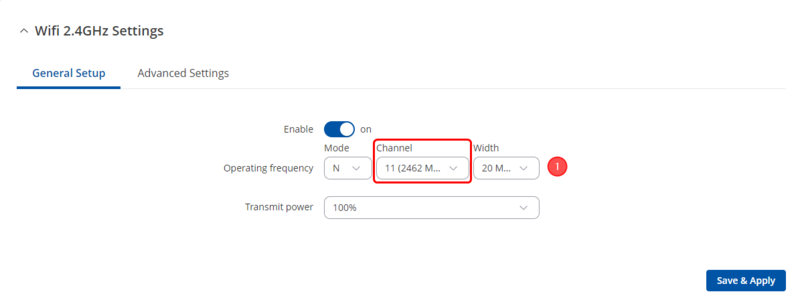
AP/WiFi Router
LAN Setting
Navigate to the Network → Interfaces → Edit LAN, Configures as follows:
- Enter IPv4 address: 192.168.1.2 (On router 3, enter 192.168.1.3)
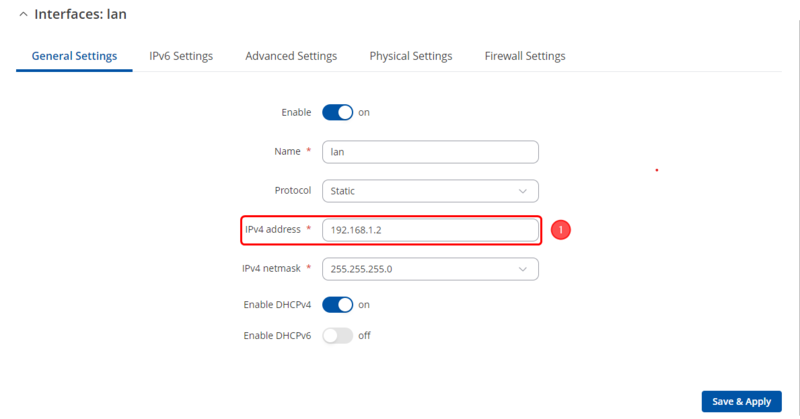
Navigate to the Network → DHCP → Sever Setting, configures as follows:
- Select DHCPv4 Mode to Relay
- Enter DHCP Server 192.168.1.1 (Gateway router is also the DHCP server for all internal devices)
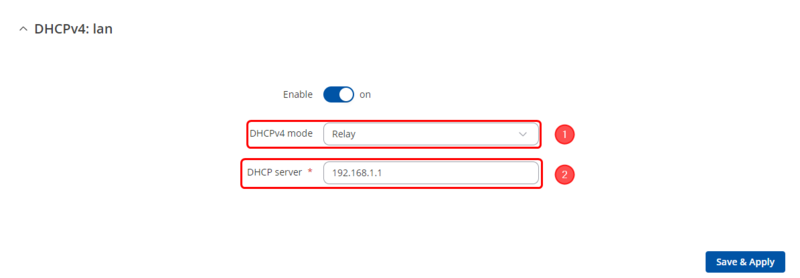
Add default routing to gateway router
Navigate to the Network → Routing → Static routes, add one default routing to gateway routing. Configures as follows:
- Add 0.0.0.0/0 static route to gateway IP 192.168.1.1 with matrix 1, select Route Type to unicast
Enable 802.11r Fast Transition
Navigate to the Network → Wireless → SSIDs, configures as follows:
- Select radios to 2.4Ghz
- Enter SSID: WiFi_Roaming (Same as gateway's SSID)
- Enter Password (Same as gateway's SSID password)
- Enable 802.11r Fast Transition
- Enter Mobile Domain: 4f57 (Keep same as gateway router's setting)
- Stand close to Router 2 or Router 3.
- Connect to SSID WiFi_Roaming
- Check if the connected devices are showed on wireless clients page. (Staus → Wireless → Interfaces)
- Reboot the router 2 or router 3 (Simulate the devices is offline)
- Check the gateway router's CLI, the log will show fast transit completed, do not start 4-way handshake.
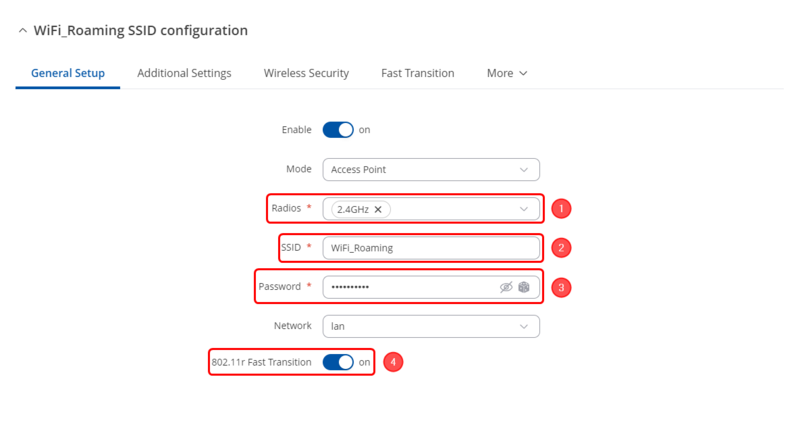
Navigate to the Fast Transition section
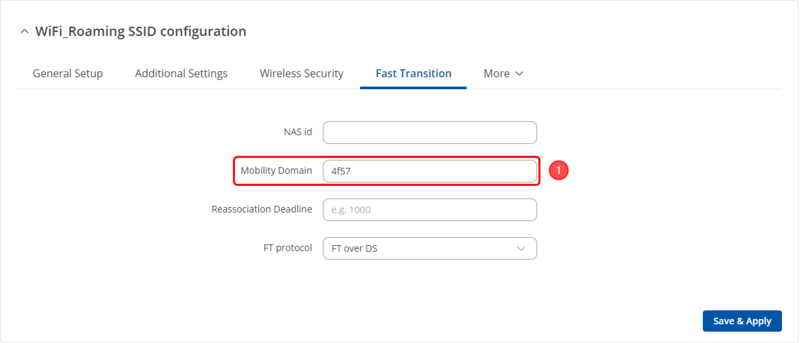
Result
The single AP should now be visible on your WiFi devices (an iOS phone is used in this example).
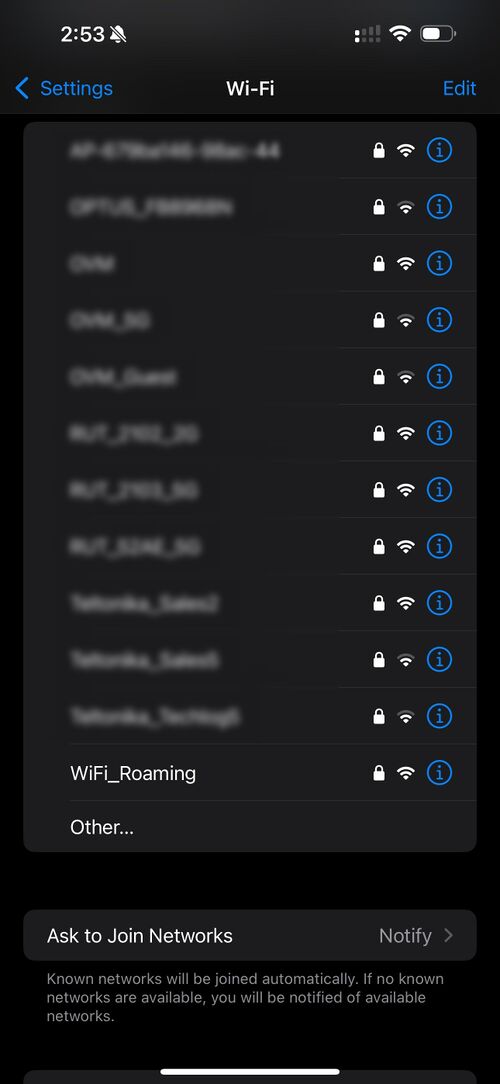
Use copper connect to gateway router, login webUI navigate to System → Maintenance → CLI. Open CLI then login by username root and login password. Do the following steps to check the result.

